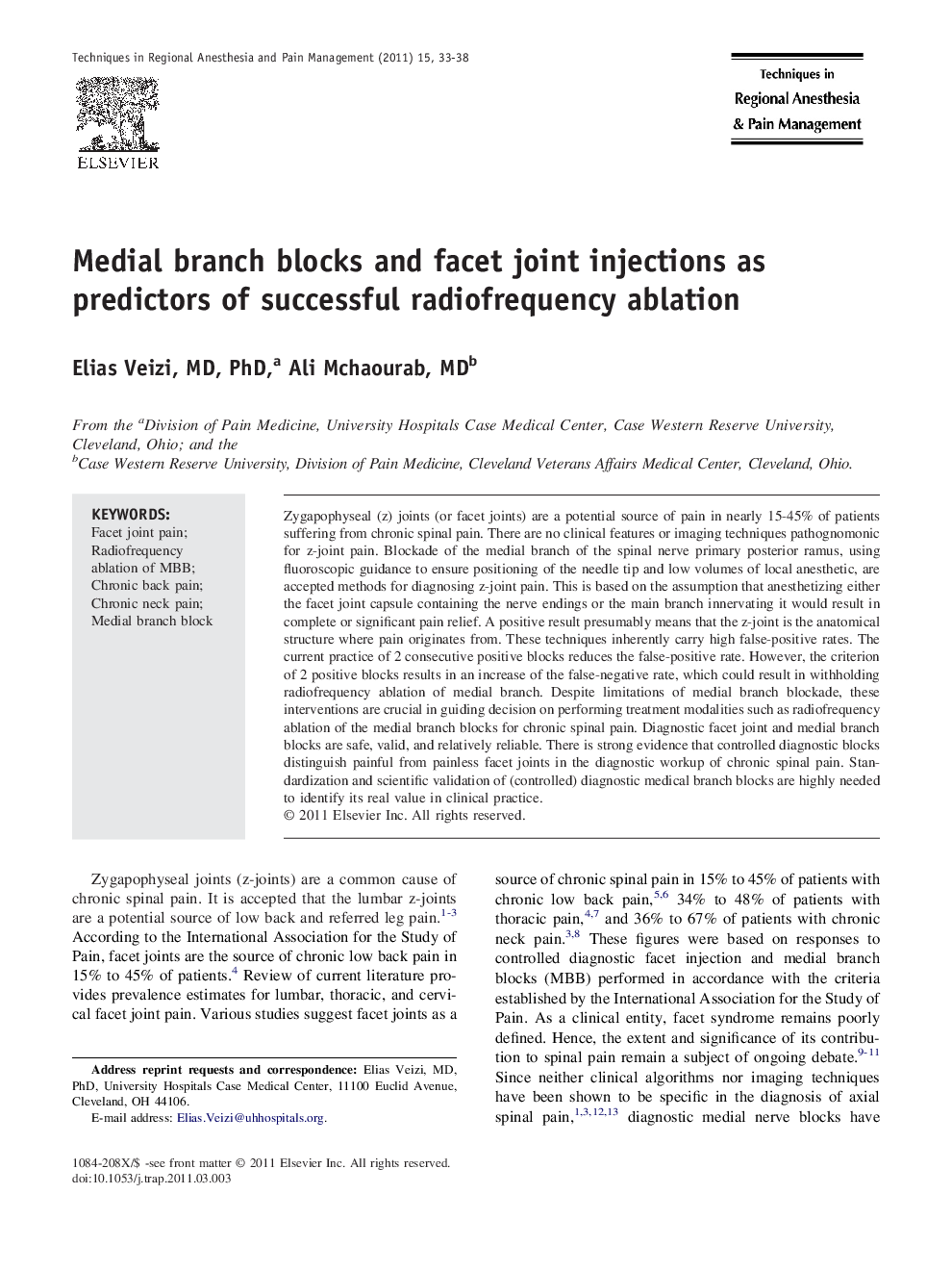| Article ID | Journal | Published Year | Pages | File Type |
|---|---|---|---|---|
| 2772307 | Techniques in Regional Anesthesia and Pain Management | 2011 | 6 Pages |
Zygapophyseal (z) joints (or facet joints) are a potential source of pain in nearly 15-45% of patients suffering from chronic spinal pain. There are no clinical features or imaging techniques pathognomonic for z-joint pain. Blockade of the medial branch of the spinal nerve primary posterior ramus, using fluoroscopic guidance to ensure positioning of the needle tip and low volumes of local anesthetic, are accepted methods for diagnosing z-joint pain. This is based on the assumption that anesthetizing either the facet joint capsule containing the nerve endings or the main branch innervating it would result in complete or significant pain relief. A positive result presumably means that the z-joint is the anatomical structure where pain originates from. These techniques inherently carry high false-positive rates. The current practice of 2 consecutive positive blocks reduces the false-positive rate. However, the criterion of 2 positive blocks results in an increase of the false-negative rate, which could result in withholding radiofrequency ablation of medial branch. Despite limitations of medial branch blockade, these interventions are crucial in guiding decision on performing treatment modalities such as radiofrequency ablation of the medial branch blocks for chronic spinal pain. Diagnostic facet joint and medial branch blocks are safe, valid, and relatively reliable. There is strong evidence that controlled diagnostic blocks distinguish painful from painless facet joints in the diagnostic workup of chronic spinal pain. Standardization and scientific validation of (controlled) diagnostic medical branch blocks are highly needed to identify its real value in clinical practice.
